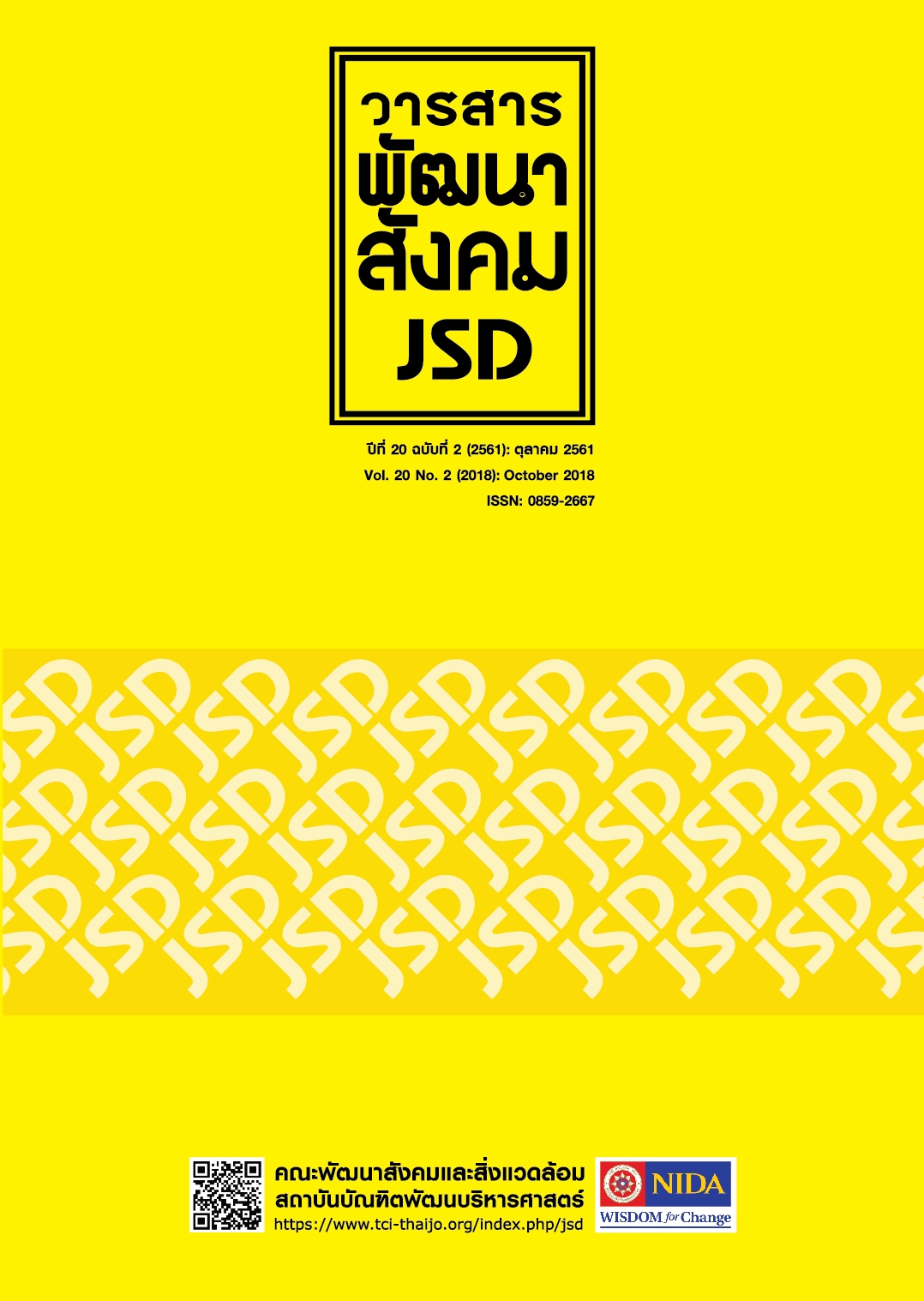ความเป็นไปได้ในการขนส่งเชื่อมโยงแม่น้ำแม่กลองเพื่อลดต้นทุนค่าขนส่งน้ำตาล
Main Article Content
บทคัดย่อ
งานศึกษานี้มีวัตถุประสงค์เพื่อศึกษาความเป็นไปได้ในการขนส่งหลายรูปแบบเชื่อมโยงกับแม่น้ำแม่กลอง เพื่อใช้เป็นทางเลือกในการขนส่งน้ำตาลในภาคตะวันตก โดยวิเคราะห์ต้นทุนเทียบกับการขนส่งปัจจุบัน ได้แก่ การขนส่งโดยรถบรรทุกรูปแบบเดียว และการขนส่งหลายรูปแบบผ่านแม่น้ำเจ้าพระยาข้อมูลที่นำมาใช้ประกอบด้วยข้อมูลปฐมภูมิที่ได้จากการเก็บข้อมูลภาคสนาม และข้อมูลทุติยภูมิจากหน่วยงานที่เกี่ยวข้องกับการขนส่ง ผลการศึกษาพบว่า การขนส่งทางแม่น้ำแม่กลองนั้นยังคงมีต้นทุนที่สูงกว่ารูปแบบการขนส่งปัจจุบันที่ใช้ประโยชน์จากแม่น้ำเจ้าพระยา แต่หากเทียบกับการขนส่งรูปแบบเดียวด้วยรถบรรทุก พบว่า การขนส่งเชื่อมโยงแม่น้ำแม่กลองนั้นต้นทุนต่ำกว่าในทุกปลายทางการขนส่ง ดังนั้น เพื่อการขนส่งที่ยั่งยืน หน่วยงานภาครัฐ ควรมีบทบาทสำคัญในการสร้างสร้างแรงจูงใจให้ผู้ประกอบการใช้รูปแบบการขนส่งที่นำเสนอ อีกทั้งผู้ประกอบการในห่วงโซ่การขนส่งควรร่วมมือกันวางแผนการตลาดร่วมกันเพื่อให้ต้นทุนค่าขนส่งน้ำตาลลดลง
Article Details
เอกสารอ้างอิง
2. Baird, A. (2004). Investigating the Feasibility of Fast Sea Transport Services. Maritime Economics and Logistics, 6(3), 252–269.
3. Casaca, A. C. P., & Marlow, P. B. (2002). Strengths and Weaknesses of Short Sea Shipping. Marine Policy, 26(3), 167–178.
4. Casaca, A. C. P., & Marlow, P. B. (2009). Logistics Strategies for Short Sea Shipping Operating as Part of Multimodal Transport Chains. Maritime Policy & Management, 36(1), 1–19.
5. Department of Land Transport. (2010). Final Report on the Study of Truck Transportation Costs (Vol. 1/2). First Edition. Retrieved from Bangkok: Department of Land Transport.
6. European Commission. (1999). The Development of Short Sea Shipping in Europe: A Dynamic Alternative in Sustainable Transport Chain Second Two–yearly Progress Report.
7. Kongsawatvorakul, A., Prabnasak, J., & Vuchlung, C. (2016). An Investigation of Inland Water Transportation Situation, Tugging Charge and Conditions of River in Chao–Phraya Basin, Thailand. Paper presented at the Transport and Logistic International 2016, Taiwan.
8. Konings, R., Kreutzberger, E., & Maraš, V. (2013). Major Considerations in Developing a Huband-Spoke Network to Improve the Cost Performance of Container Barge Transport in the Hinterland: the Case of the Port of Rotterdam. Journal of Transport Geography, 29.
9. Konishi, Y., Nishiyama, Y., & Sung, J.-e. (2012). Determinants of Transport Costs for Inter–regional Trade. Paper presented at the RIETI Discussion Paper Series 12–E–016, Vienna, Austria.
10. Loon, C. K. (2009). Short–Sea Transport and Economic Development in Penang. Business Intelligence Journal, 2(2).
11. M. Zhang, & Pel, A. J. (2016). Synchromodal Hinterland Freight Transport: Model Study for the Port of Rotterdam. Journal of Transport Geography, 52, 1–10.
12. Medda, F., & Trujillo, L. (2010). Short-Sea Shipping: An Analysis of Its Determinants. Maritime Policy & Management, 37(3), 285–303.
13. Phakbunmeecharoen, W. (2012). Factor Affecting the Management of Logistics in Freight Transport Routes Water Gulf of Thailand Chao Phraya and Pa Sak River. (Master), Phranakhon Si Ayutthaya Rajabhat University, Phranakhon Si Ayutthaya.
14. Rohács, J., & Simongáti, G. (2007). The Role of Inland Waterway Navigation in a Sustainable Transport System. Transport, 22(3), 148–153.
15. Rudjanakanoknad, J., & Sukdanont, S. (2015). The Use of Inland Waterways in Central Region to Reduce Transport Costs of Agricultural Products.
16. Suárez-Alemán, A., Trujillo, L., & Medda, F. (2015). Short Sea Shipping as Intermodal Competitor: A Theoretical Analysis of European Transport Policies. Maritime Policy & Management, 42(4), 317–334.
17. Sukdanont, S. (2017). The Use of Inland Waterways in the Western Region for Sugar Transportation. Bangkok: Transportation Institute, Chulalongkorn University.
18. Thailand Development Research Institute (TDRI). (2012).TheStudy of Supply Chain Management and Logistics for Agricultural Products (Vol. 1 ) . Bangkok: Office of the National Economics and Social Development Board.
19. Tzannatos, E., Tselentis, B., & Corres, A. (2016). An Inland Waterway Freight Service in Comparison to Land–Based Alternatives in South-Eastern Europe: Energy Efficiency and Air Quality Performance. Transport, 31(1), 119–126.


